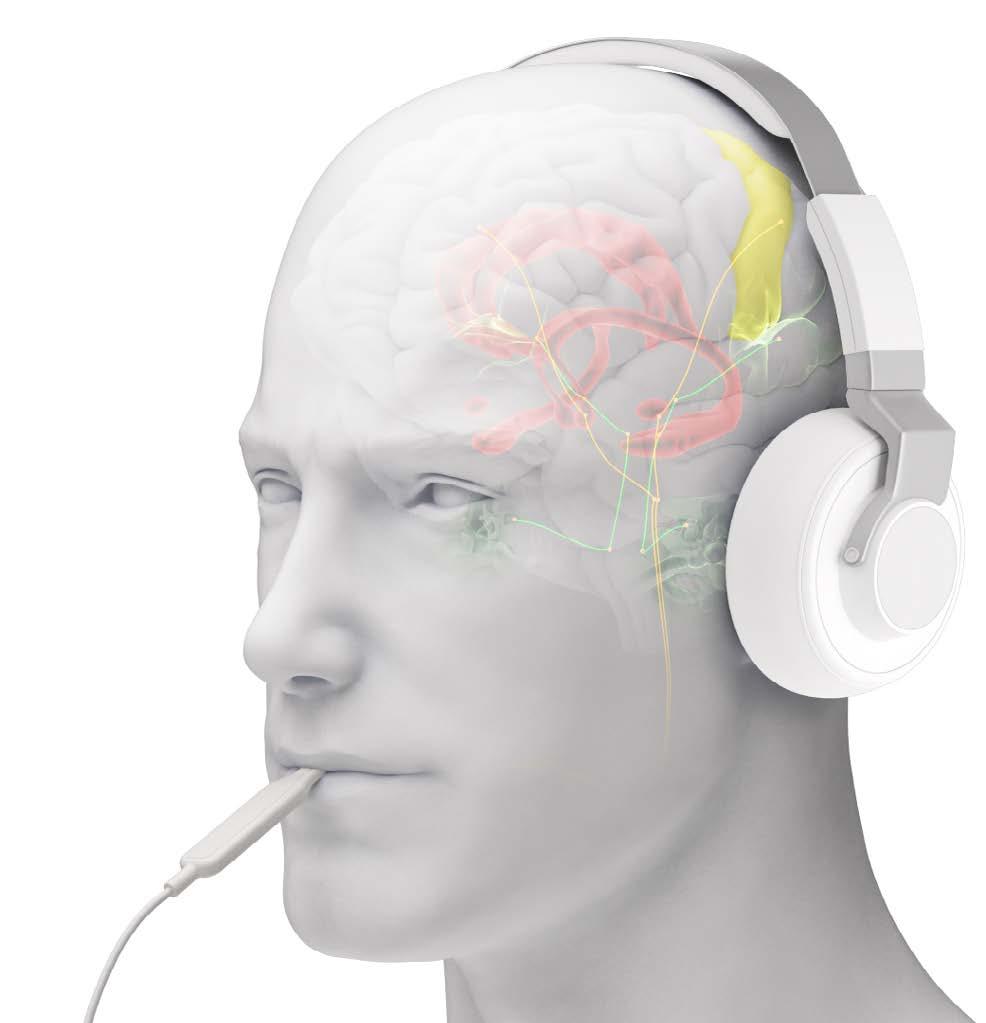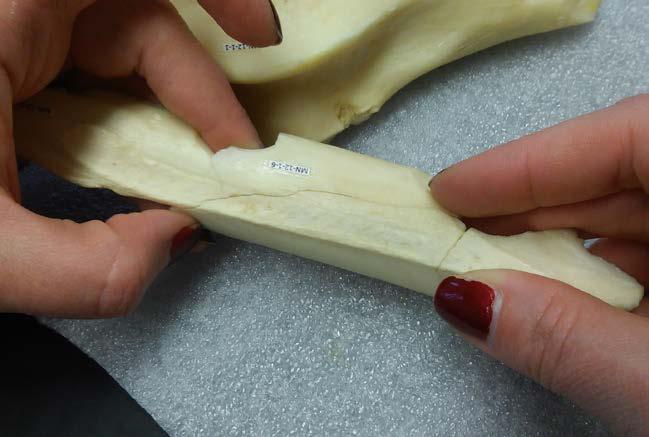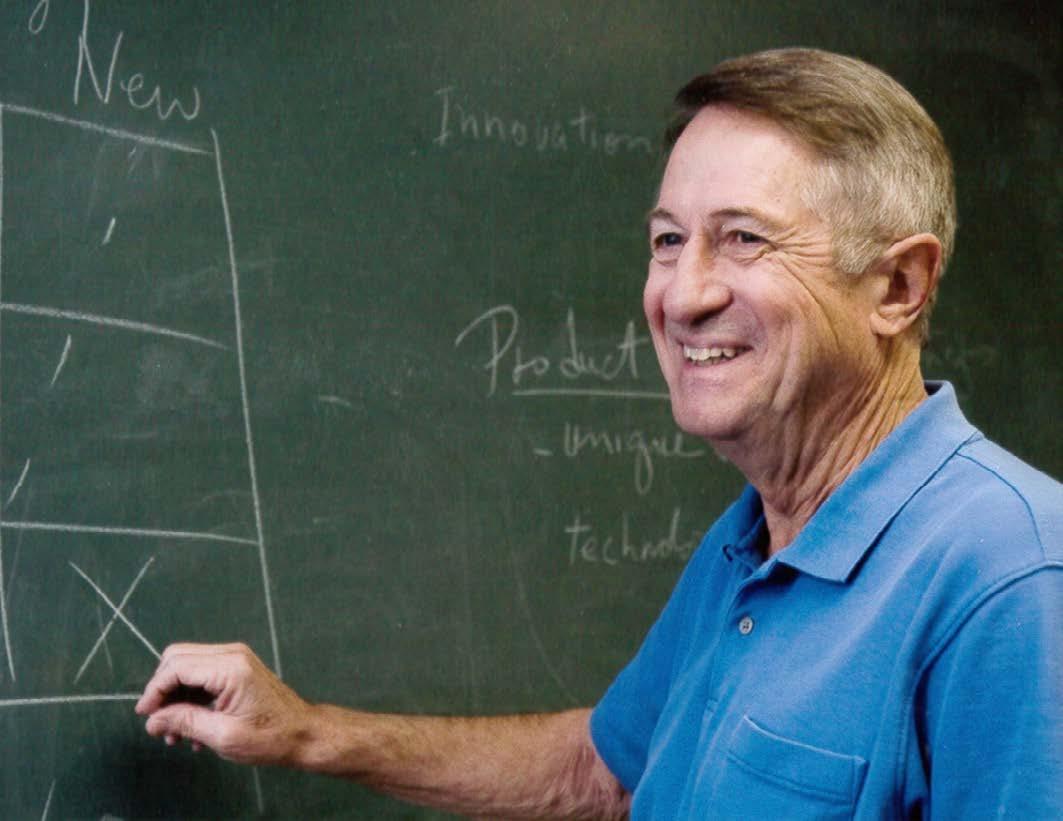
3 minute read
TECH DIGEST
from Inventing Tomorrow Winter 2021
by College of Science and Engineering at the University of Minnesota
In the largest clinical trial of its kind, researchers show that combining sound and electrical stimulation of the tongue can significantly reduce tinnitus, commonly described as “ringing in the ears.” The findings could potentially help millions of people. z.umn.edu/tinnitus Photo courtesy of McAlpine Research Group, UMN
channels for medical testing
In a groundbreaking new study, researchers have 3D printed unique fluid channels at the micron scale that could automate production of diagnostics, sensors, and assays used for a variety of medical tests and other applications. z.umn.edu/3Dprintedmicrofluidics
Research could help millions with ‘ringing in the ears’

Researchers 3D print micro-scale fluid
Photo by Katrina Yezzi-Woodley, UMN
Researchers piece together puzzles from the past

University mathematicians are working with anthropologists, using advanced mathematics and machine learning to reassemble and analyze broken animal bones from ancient human sites. z.umn.edu/bones
AI algorithm helps analyze chest X-rays for COVID
A team of University of Minnesota researchers, including computer scientists, recently developed and validated an artificial intelligence algorithm that can help evaluate chest X-rays to diagnose possible cases of COVID-19. All 12 M Health Fairview hospitals use the new algorithm. z.umn.edu/AIalgorithm

Photo courtesy of Caltech/R. Hurt (IPAC)
Black hole collision may have exploded with light
An international team of astronomers, including researchers from the University of Minnesota, have seen what might amount to the first light ever detected from a black hole merger. z.umn.edu/blackholecollision
Photo courtesy of Getty/Epic Systems Corporation

T. rex had growth spurts, other dinos grew ‘slow and steady’
A team of researchers has discovered that dinosaurs like Tyrannosaurus rex and its closest relatives had an awkward adolescence during which they got huge, while the T. rex’s more distant cousins grew a little bit every year. z.umn.edu/dinogrowth
University receives $18M grant for materials research
The National Science Foundation has awarded $18 million in renewed funding over the next six years for the University’s Materials Research Science and Engineering Center (MRSEC). z.umn.edu/MRSECrenewal
Photo courtesy of Leighton Research Group, UMN

‘Fool’s gold’ may be valuable after all
In a breakthrough new study, scientists and engineers have electrically transformed the abundant and low-cost non-magnetic material iron sulfide, also known as “fool’s gold” or pyrite, into a magnetic material. This could be the first step in creating valuable new magnetic materials for more energy-efficient computer memory devices. z.umn.edu/magnetism
Researchers 3D print a working heart pump with real human cells

Researchers have 3D printed a functioning centimeter-scale human heart pump in the lab. The discovery could have major implications for studying heart disease, which kills more than 600,000 people a year. z.umn.edu/heartpump
Photo courtesy of Ogle Research Group, UMN
U and collaborators receive $26M for new NSF center
The National Science Foundation awarded the University of Minnesota Institute for Engineering in Medicine and Massachusetts General Hospital $26 million over five years to fund a new center to develop and deploy breakthrough bioengineering technology. z.umn.edu/ATP-Bio20
U of M to lead NSF-funded ‘Global Quantum Leap’

The University of Minnesota will lead a five-year, $2 million grant from the National Science Foundation to create an international “network-ofnetworks” that seeks to accelerate the discovery and development of quantum information systems. z.umn.edu/quantumleap
CSE professor bolsters post-wildfire recovery pipeline
A University of Minnesota engineer is working with West Coast researchers to help communities address water pipeline contamination in the aftermath of wildfires. z.umn.edu/wildfire







